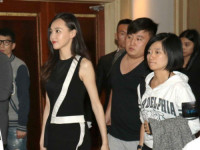Overview of new gui¶
来源:互联网 发布:深圳众诚网络 编辑:程序博客网 时间:2024/05/24 06:34
Overview of new gui
Introduction
It was difficult to design complex UI before GUI system was introduced. Even if you can design specific UI for specific kind of game, such as MMORPG, still you can't reach your expectation because of abundant of UI. We can design a GUI system ourselves, but it's a huge program to pursue. Now Cocos2d-x has its own solution-GUI system. Let's get started.
GUI Widgets
Let's take a glance of these widgets in following list. Details about these widgets will be shown later.
Usage of General Widgets
Let's get started with Hello Cocos
Every element in GUI system is a Widget element and a Widget is inherited from cocos2d::Ref class. Now Widget element are inherited from cocos2d::Node class, so all the Node descendants could be added into the Widget tree.
In C++:
12345678910auto size = Director::getInstance()->getWinSize();auto label = Text::create();label->setText("Hello Cocos!");label->setFontName("Marker Felt");label->setFontSize(30);label->setColor(Color3B(159, 168, 176));label->setPosition(Point(size.width / 2, size.height / 2));addChild(label);
In Lua
1234567self._displayValueLabel = ccui.Text:create() self._displayValueLabel:setString("No Event") self._displayValueLabel:setFontName(font_UIButtonTest) self._displayValueLabel:setFontSize(32) self._displayValueLabel:setAnchorPoint(cc.p(0.5, -1)) self._displayValueLabel:setPosition(cc.p(widgetSize.width / 2.0, widgetSize.height / 2.0)) self._uiLayer:addChild(self._displayValueLabel)
In addtion, Text class has other properties:
Text usually used for display static text, but you can also get the same function by addingaddTouchEventListener.
Usage of Button
The code below shown a Text and then we'll add a Button. When touch the Button the content of the Text will be changed:
In C++:
1234567auto uButton = Button::create(); uButton->setTouchEnabled(true); uButton->loadTextures("cocosgui/animationbuttonnormal.png", "cocosgui/animationbuttonpressed.png", ""); uButton->setPosition(Point(size.width / 2, size.height / 2) + Point(0, -50)); uButton->addTouchEventListener(this, toucheventselector(HelloWorld::touchEvent)); uLayer->addWidget(uButton);
In Lua:
123456local button = ccui.Button:create() button:setTouchEnabled(true) button:loadTextures("cocosui/animationbuttonnormal.png", "cocosui/animationbuttonpressed.png", "") button:setPosition(cc.p(widgetSize.width / 2.0, widgetSize.height / 2.0)) button:addTouchEventListener(touchEvent) self._uiLayer:addChild(button)
We used addTouchEventListener to add touch event callback function. The implementation oftouchEvent in the following code will show you how it listens the every status of the button(such as click, move, end touch and cancel touch):
Note: _lbl is a private variable and the reference of the Text.
In C++
12345678910111213141516171819202122void HelloWorld::touchEvent(Ref *pSender, TouchEventType type) { switch (type) { case ui::Widget::TouchEventType::BEGAN: _lbl->setText("UIButton Click."); break; case ui::Widget::TouchEventType::MOVED: // TODO break; case ui::Widget::TouchEventType::ENDED: // TODO break; case ui::Widget::TouchEventType::CANCELED: // TODO break; default: // TODO break; } }
In Lua
1234567891011local function touchEvent(sender,eventType) if eventType == ccui.TouchEventType.began then self._displayValueLabel:setString("Touch Down") elseif eventType == ccui.TouchEventType.moved then self._displayValueLabel:setString("Touch Move") elseif eventType == ccui.TouchEventType.ended then self._displayValueLabel:setString("Touch Up") elseif eventType == ccui.TouchEventType.canceled then self._displayValueLabel:setString("Touch Cancelled") end end
Note: Some widgets can not enable touch, such as Text and ImageView, however, Button and ScrollView must enablesetTouchEnabled, and this function is inherited from Widget.
General properties and Usages of ImageView
To enrich the UI we added a image display widget-ImageView, as following code:
In C++:
ImageView *imageView = ImageView::create(); imageView->loadTexture("cocosgui/ccicon.png"); imageView->setPosition(Point(size.width / 2, size.height / 2) + Point(0, 50)); this->addWidget(imageView);** In Lua**
1234local imageView = ccui.ImageView:create() imageView:loadTexture("cocosui/ccicon.png") imageView:setPosition(cc.p(widgetSize.width / 2.0, widgetSize.height / 2.0 + imageView:getContentSize().height / 4.0)) self._uiLayer:addChild(imageView)
Import resource from CocoStudio
We've got the basic steps to use widgets by the contents we've mentioned above. First we should create some UI widgets, then adding them into a layer or scene. In the meantime, set some general properties such as click when you need interaction actions. If the widgets are not too much we can easily manage it, however, when the UI widgets are too much to control it maybe a trouble. So we introduce a new way to load UI resource by CocoStudio.
What are the advantages of using CocoStudio? CocoStudio UI editor allows you preview the result you just designed by every widgets in the editor. It saves you much time to code for the widgets properties because you can set them in the editor. For example, you can set ImageView display image, set Text display text, set button image for Button and enable touch. It's efficient to use CocoStudio and GUI lib together.
Load GUI Resource
Now we use the method provided by cocostudio::GUIReader loading UI widgets from json file:
In C++
123456Layout* m_pLayout = dynamic_cast<UILayout*>(cocostudio::GUIReader::shareReader()->widgetFromJsonFile("cocosgui/UITest/UITest.json")); this->addChild(m_pLayout); Text* m_pSceneTitle = dynamic_cast<Text*>(m_pLayout->getWidgetByName("UItest"));
In Lua
1234self._layout = ccs.GUIReader:getInstance():widgetFromJsonFile("cocosui/UIEditorTest/UIButton_Editor/UIButton_Editor_1.json") self._uiLayer:addChild(self._layout) local sceneTitle = self._layout:getChildByName("UItest")
Note: The UITest.json file here is generated by CocoStudio UI editor, usually we don't change the content to change every property. You can find more details about how to use CocoStudio from CocoStudio document.
UITest.json file contains all the defines of UI, layout of UI and every setting of properties. When GUIReader loaded resource, corresponding widgets can be created and fill their properties. By using CocoStudio UI editor saves a lot of coding work.
UI Resource Using Procedure
As discussed, the first resource you got from UI resource is a Layout resource, and it's the Panel widget in CocoStudio. It always be the root widget of UI widget for layout work. We can add Button, Text, CheckBox, ImageView and Scrollview, etc to Panel. Also, it's possible to add a Panel as sub-area to a Panel. This json file is a dictionary data structure, which "key" stores the property name and "value" stores the value. There is no concern about the implementation of the GUIReader.
When Layout added to a layout, we can use layout->getWidgetByName("UItest") to get a exists widget in UI resource from Layout.Note: The getWidgetByName() method here belongs to Layout. Remember Layout is just one kind of widget.
- Overview of new gui¶
- cocos2dv3 new GUI Usage of Container
- A brief overview of Nova’s new object model
- 12C New Feuture: Overview of Container Databases (CDB) and Pluggable Databases (PDB)
- Overview of ASP.NET
- [SilkTest]Overview of tags
- Overview of the Book
- Overview of Domain Models
- Overview of Models
- Overview of GSM protocol
- Overview of H323
- Overview of ACE
- Overview of webapp framework
- OVERVIEW OF EJB
- Overview of COCOMO
- An Overview of WebCore
- Overview of Soak testing
- Overview of malware inspection
- 集合框架(二)--Map集合
- nyoj1038纸牌游戏
- POJ 2396 构造矩阵(上下流)
- xls格式的文件导入
- STL算法分类记忆
- Overview of new gui¶
- 网络流入门 最大流,带下界,最小费用,EK算法,Dinic算法 模板
- Crane(线段树)
- Gartner Identifies China's Top 10 Strategic Technology Trends in 2014
- js replace
- 两个栈实现队列的功能
- Fragment的切换
- 哈热火安而后
- 浅析JVM内存结构和6大区域


